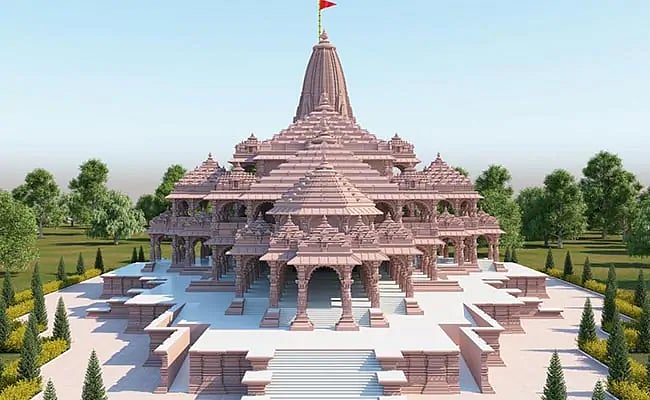Most Indians are aware of the 1857 Mutiny, as well as the Indepence movement led by Mahatma Gandhi and the Indian National Congress in the first half of the twentieth-century.
Much less well known is the tribal uprising of the Santhal, a Munda ethnic group native to present-day Jharkhand.
The 19th century witnessed innumerable movements, but the ones like the Santhal revolt hold a significant role in India’s struggle for freedom.
The Santhal revolt ( also known as the Hul revolt ) started on 30th June 1855, with the help of prominent leaders like Sidhu, Kanhu, Chand, and Bhairav, and also their two sisters Phulo and Jhano, all of them played an important role in the movement.
The Santhals were the tribal people inhabiting the forest of Rajmahal hills. In 1832, East India Company demarcated the Damin-i-Koh from the region of Jharkhand and gave it to Santhals to settle with a promise of non-interference in their land.
But with changing times and the rising demand of the Britishers, the rent to the Santhals raised to an exorbitant rate. Ultimately, the Santhals were trapped in a situation where they had the only option to revolt against the Britishers and the Zamindars, leading to Santhal Rebellion.
Background
Among the numerous tribal revolts, the Santhal hool or uprising was the most massive. The Santhals, who live in the area between Bhagalpur and Rajmahal, known as Daman-i-koh, rose in revolt; made a determined attempt to expel the outsiders — the dikus — and proclaimed the complete ‘annihilation’ of the alien regime.
The social conditions which drove them to insurrection were described by a contemporary in the Calcutta Review as follows: ‘Zamindars, the police, the revenue and court alas have exercised a combined system of extortion, oppressive exactions, forcible dispossession of property, abuse and personal violence and a variety of petty tyrannies upon the timid and yielding Santhals.
Usurious interest on loans of money ranging from 50 to 500 per cent; false measures at the haul and the market; wilful and uncharitable trespass by the rich by means of their untethered cattle, tattoos, ponies and even elephants, on the growing crops of the poorer race; and, such like illegalities have been prevalent.’
The Rebellion
Depressed and anguished, the Santhals engaged in guerrilla warfare and took the revolt in 1855-56. The Santhals formed their own troops which included farmers and marched against their oppressors. The Santhal army destroyed the postal communications along with the rail line.
Two brothers Sidhu and Kanhu Murmu along with their sisters Phulo and Jhano Murmu, led the rebellion. They militarised over 10,000 people. Storehouses and warehouses were also burgled and were doused in the fire. They headed towards the headquarters in Calcutta (now Kolkata).
However, when the news of their rebellion reached the government, they sent the military to gun down the Santhals. Heavy weapons loaded were used in revenge to bows and arrows. Elephants were used to destroy their houses.
The brother duo Sidhu and Kanhu were arrested and executed. At the same time, Phulo and Jhano Murmu entered the enemy camp undercover and slew 21 soldiers before they died. Unfortunately, the rebellion had a brutal end. The British army set villages ablaze, killed and even raped over 15,000 Santhals to crush their fight.
The Santhals couldn't succeed against the complete power of the government and was repressed.
Significance
English author Charles Dickens, in Household Words, wrote the following passage on the rebellion:
"There seems also to be a sentiment of honor among them; for it is said that they use poisoned arrows in hunting, but never against their foes. If this be the case and we hear nothing of the poisoned arrows in the recent conflicts, they are infinitely more respectable than our civilized enemy, the Russians, who would most likely consider such forbearance as foolish, and declare that is not war."
The rebellion was crushed ruthlessly. More than 15,000 Santhals were killed while tens of villages were destroyed. Sido was betrayed and captured and killed in August 1855 while Kanhu was arrested by accident at the tail-end of the rebellion in February 1866.
And the Rajmahal Hills were drenched with the blood of the fighting Santhal peasantry.
One typical instance of the heroism of Santhal rebels has been narrated by L.S.S. O’Malley:
"They showed the most reckless courage never knowing when they were beaten and refusing to surrender. On one occasion, forty- five Santhals took refuge in a mud hut which they held against the Sepoy’s. Volley after volley was fired into it… Each time the Santhals replied with a discharge of arrows. At last, when their fire ceased, the Sepoys entered the hut and found only one old man was left alive. A Sepoy called on him to surrender, whereupon the old man rushed upon him and cut him down with his battle axe.”
The Santhal Rebellion had marked a class and caste fight, which set an example for people to revolt to claim their rights.
The revolt was also observed as the forerunner of the Naxalite movement in Bengal.
The Santhal Rebellion is considered to be one of the most extraordinary incidents in the history of pre-independent Indian Subcontinent.
(To receive our E-paper on whatsapp daily, please click here. To receive it on Telegram, please click here. We permit sharing of the paper's PDF on WhatsApp and other social media platforms.)





